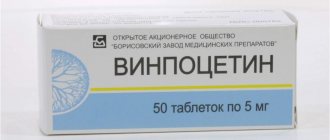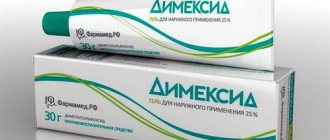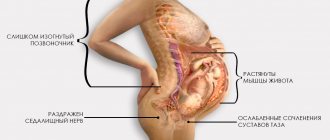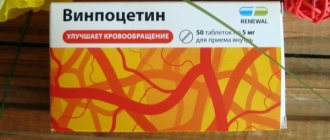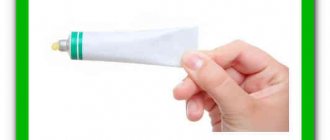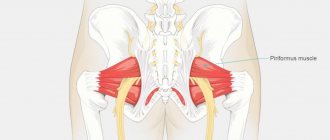Injections
How to treat inflammation if it becomes acute? In the acute period of sciatica, injections help relieve severe pain. When injected, the medicine immediately enters the bloodstream and quickly has a therapeutic effect.
In severe cases, it is possible to use stronger drugs than regular Analgin for pain relief: for example, Tramadol or even Morphine, but they cannot be used constantly so as not to cause addiction in the patient.
The same applies to steroids (hormones). Hydrocortisone or Prednisolone is prescribed very carefully, under the strict supervision of the attending physician.
There are other injections for sciatica that are absolutely safe, provided the patient has no allergic reactions. For muscle spasms, a mixture of No-shpa and Papaverine, as well as Mydocalm, is prescribed. Analgin has not only an analgesic, but also an anti-inflammatory effect. To restore nerve conduction and in case of sensitivity disorders, neurologists recommend a course of Neuromidin injections to patients.
No-spa in injection form will quickly relax spasmodic muscles
B vitamins also improve nerve conduction that is impaired as a result of a pinched sciatic nerve. Vitamin injections may be painful, but their benefits should not be doubted. It is these drugs, as part of complex treatment, that speed up recovery and help the patient quickly enter a period of remission:
- vitamins B1, B6, B12;
- Combilipen - from 200 rubles;
- Milgamma (a well-known mixture consisting of several B vitamins and lidocaine - a local anesthetic) - from 300 rubles.
Milgamma will help prevent the recurrence of sciatica pain
Vitamin complexes stimulate metabolic processes in weakened tissues and ligaments, restoring their proper nutrition.
Sometimes, with severe pain, patients are prescribed several paravertebral blockades. This is a special type of injection where medications are injected into the space next to the spinal cord. The therapeutic mixture usually consists of an anesthetic (novocaine or lidocaine) and one of the anti-inflammatory drugs. Typically, injections are given:
- into the muscle;
- in the area of the nerve bundle;
- into the space next to the inflamed root.
Paravertebral blockade temporarily relieves pain. It is not a full-fledged treatment, but serves as a temporary measure to alleviate the condition until complex treatment takes effect.
Paravertebral block for sciatica
Great article on the topic:
TOP 30 injections for inflammation of the sciatic nerve: list of effective drugs
Blockade of nerve impulses
Sometimes a pinched sciatic nerve occurs due to excessive strain on the muscle tissue that runs through the spine. If you give injections of Novocaine or Lidocaine directly into the trapezius muscle, the pain goes away within 10 minutes
.
The advantage of this therapy is its speed, but it must be borne in mind that such drugs can be used no more than 4 times a month. Remember that the use of Lidocaine or Novocaine
is only a temporary measure; it does not in any way affect the very cause of pain.
With the help of such means, you can urgently regain your physical activity. Among the undoubted advantages of using such tools are:
- quick relief from pain and discomfort;
- impact on the lesion;
- no side effects;
- getting rid of swelling, inflammation, muscle tension, and vascular spasm.
Ointments and gels
In addition to tablets and injections prescribed by a neurologist, patients often use local treatment in the form of ointments and gels at home. As mentioned earlier, in the acute stage of the disease you cannot use ointments with a warming effect, but as the inflammatory process subsides, some of them can be used in moderation.
Be sure to read: TOP 50 warming (warming) ointments for muscles and joints, legs and back
Local remedies can be used in addition to injections and tablets to enhance the analgesic and anti-inflammatory effect. Ointments should be applied 2-3 times a day. There are painkillers and warming ointments.
It is important to understand that warming ointments cannot be used in the presence of an inflammatory process.
Effective pain relieving ointments:
- Voltaren emulgel (contains NSAIDs - diclofenac) - from 250 rubles;
- Diclofenac - from 30 rubles;
- Nise - from 200 rubles;
Nise gel provides good pain relief for sciatica - Ketoprofen - from 50 rubles;
- Traumeel S is a homeopathic ointment. It contains herbal extract, improves metabolism in affected tissues, reduces pain. Costs from 500 rubles;
- Teraflex M, Chondroitin, Chondroxide. The funds cost from 100 rubles. Such ointments and gels restore the structure of the ligamentous apparatus of the spine. They contain several components that are part of the natural “composition” of our cartilage, discs and ligaments.
- Sofia - from 150 rub.
Warming ointments should be used only after the acute process has subsided and prior consultation with a doctor. When used correctly, they warm tissues, relieve pain and provide oxygen flow to affected areas.
Good warming ointments and gels (apply only with an applicator):
- Viprosal B - from 300 rubles;
- Finalgon - from 300 rubles;
- Kapsikam - from 300 rubles;
Capsicam - a strong warming ointment for sciatica - turpentine ointment - from 30 rub.
Good article to follow up:
TOP 20 best ointments for pinched sciatic nerve: warming, analgesic, anti-inflammatory
Plasters
This is a more convenient method of treatment compared to ointments: you just need to stick the patches on the affected area and wait for the analgesic effect. Here is a list of the best patches that modern medicine offers:
- Voltaren. This is a patch that contains a non-steroidal anti-inflammatory drug - diclofenac sodium. Voltaren can reduce minor pain and inflammation. Some patients note that the Voltaren patch does not adhere well to the skin. The effect of the patch is 24 hours, the course of treatment is 10-14 days. — from 150 rub.
- Versatis. This anesthetic patch contains lidocaine. Versatis has a good anti-inflammatory effect and relieves pain worse. The patch is effective for 12 hours, the course of treatment is no more than 5 days. — from 800 rub.
Treatment at home
With the exception of severe cases, patients receive treatment at home. In the first days of the disease, you need to stay in bed, but this does not mean that you need to completely limit yourself in movements. With a constant fear of moving, there is a risk of muscle atrophy.
If the treatment is comprehensive and correct, the pain syndrome will decrease every day. As it decreases, you need to train yourself to carefully get up and walk around the apartment, avoiding hypothermia and drafts. During treatment you will have to change your lifestyle by giving up smoking, drinking alcohol and spicy food. It is better to completely exclude coffee from the diet, and drink tea that is moderately sweet and not very thick.
An excellent remedy for removing toxins from the body is cranberry juice. It can be prepared at home at any time of the year. It has anti-inflammatory, antibacterial and tonic effects.
The applicator Lyapko and Kuznetsova have a good relaxing and analgesic effect. The procedure increases blood circulation, removes toxins, and relieves spasms.
Vacuum massage cups are suitable for relieving the symptoms of sciatica at home. The therapeutic procedure will relieve all muscle tension, quickly relieve acute pain, increase blood circulation, and remove toxins. Patient reviews are only positive.
Video: a good way to treat the sciatic nerve with therapeutic massage and vacuum cupping
Be sure to read this good article:
Inflammation of the sciatic nerve (sciatica): TOP 50 methods of quick treatment at home
Main manifestations of sciatica
Sciatica neuralgia (sciatica) is a disease that has characteristic clinical symptoms. They can be represented like this:
- pain in the leg on the affected side;
- unpleasant sensations and discomfort in the lumbar spine;
- numbness of the lower extremities is often unilateral;
- decreased strength in the leg on the affected side;
- difficulty walking.
The disease can manifest itself as a combination of symptoms, but the dominant symptom is always pain. It often occurs at night, suddenly against the background of complete health. A chronic course is also possible if the nervous tissue becomes inflamed regularly against the background of provoking factors. The pain is unbearable, and without treatment it inevitably leads to complications that seriously affect a person’s quality of life. Among the most dangerous consequences of sciatic neuralgia are disturbances in defecation and urination, paresis in the lower limb, which makes normal walking impossible.
Folk remedies
How to treat sciatica using folk remedies and when is their use acceptable? Like warming ointments, traditional medicine methods cannot be used in the acute period of the disease. It is best to be treated with home treatments during the remission stage, to prevent subsequent exacerbations.
Prepare a compress from yeast dough. You will need rye flour and water. The dough should be dense. Place it on the lumbar region, covering it with plastic wrap and a towel (to keep warm). The compress should be kept for about an hour, after which you should carefully rub the sore spot with turpentine.
A mixture of beeswax and propolis is an equally well-known folk remedy for the treatment of sciatica. Wax and propolis should be warmed up a little, after making a homogeneous mixture of them. Form the warm mixture into a large patty (about the size of two palms). Apply it to the sore spots, covering with plastic wrap, and keep the compress for an hour or an hour and a half.
Be sure to read: All about spinal blockade: is it dangerous, what is it, types, medications
A compress with beeswax and propolis is a good folk remedy for sciatica.
If you are not allergic to horseradish, take a warm bath with it. Prepare a piece of gauze in advance by wrapping finely grated horseradish in it. The water should not be very hot. Reception time - 60 minutes, course - from one to two weeks.
Conifer baths are one of the best folk remedies. Essential oils and resins have a relaxing effect on muscles and the entire body, calm the nervous system, and have an anti-inflammatory effect. You will need about 1 kg of pine branches. They need to be poured with three liters of boiling water and boiled over medium heat for 15 minutes. The warm infusion is poured into the bath, after filtering and infusing for 4 hours.
Regular stearin also perfectly relieves inflammation and pain. Melt an ordinary household candle and wait until the mass cools down a little. Apply a thin layer of warm stearin to the lumbar region.
When treating sciatica at home, good results are shown by the use of physiotherapeutic devices: Almag-01, Denas, Milta, Vitafon. Due to weak electrical impulses and other technologies, physical devices will help eliminate the symptoms of many diseases of the spine and joints. Depending on the degree of the disease, improvement may occur after 2-3 sessions or a full course of treatment.
Treatment of sciatica of the sciatic nerve
Sciatica has its own causes, symptoms, diagnosis and treatment methods.
Sciatica, due to its manifested pain, can be extremely painful. The patient cannot wait to get rid of this unpleasant process. Therefore, many resort to any, including non-traditional methods of treatment.
Causes of the disease
What is the basis of sciatica? The sciatic nerve is considered the longest and thickest nerve in the human body, the treatment of diseases of which is often difficult. This nerve is part of the lumbosacral plexus area. It is formed by 5 pairs of nerve roots of the spinal cord, branches from which extend into the buttocks and thighs.
Sciatica is mistakenly considered an independent disease, but in reality it is just a syndrome that occurs due to many pathologies. The syndrome has the ability to occur in the following cases:
- rachiocampsis;
- Bekhterev's disease;
- spinal tuberculosis;
- pregnancy status;
- various vertebral tumors and injuries;
- osteochondrosis with hernias.
Symptoms
The main symptom of the disease is pain affecting the lower back and buttocks. Next, this pain descends to the thighs, moves to the lower leg and after that to the dorsum of the foot. If lumbar lumbago is observed the day before, then this is lumbago. This pathology is called lumboischialgia. There are cases when pain affects the joint in the knees.
Secondary signs of the disease:
- movement disorders (from lameness to immobility);
- urinary and fecal incontinence;
- low sensitivity of the affected area;
- constant muscle tension in the lower back, pelvis and lower extremities;
- tingling and burning sensation.
How to diagnose sciatica?
If you experience the symptoms described above, contact a neurologist. You should not treat yourself. In general, the diagnosis can be made based on:
- patient complaints;
- neurological symptoms;
- blood and urine tests;
- results of computed tomography or magnetic resonance imaging;
- X-ray results;
- the patient's appearance.
Treatment methods
Treatment methods include traditional treatment, both with and without the use of medications, as well as treatment with traditional medicine.
With traditional treatment, it is important to follow the following scheme:
- impact on inflammation;
- relieving the patient of pain;
- restoration of muscle tone;
- increase in range of motion.
In this case, the doctor can use medications, physiotherapy procedures, massage procedures, and gymnastics in treatment. In addition to tablets and injections, the use of ointments is appropriate.
Among the non-drug methods, therapeutic physical education, physiotherapy and massage are widespread and effective. These methods lead to strengthening muscles, improving blood flow and metabolic processes in the body. Special attention from physiotherapy should be paid to the following:
- phonophoresis;
- amplipulse therapy;
- diadynamic therapy;
- UHF.
Regarding exercise therapy, it is worth noting that it should be done in a lying position. Only this position is as positive and gentle as possible. You need to start with minimal load, gradually increasing the volume.
The massage can be either acupressure or segmental, up to 30 minutes every day.
Treatment with medications is not allowed in patients with tuberculosis, pregnant women, children, as well as people suffering from tumors and skin diseases.
You can choose endlessly from traditional methods of treatment. But three of the most effective recipes that save patients with sciatica have been noted.
These recipes:
- Mix one egg white with turpentine (15 ml). Soak gauze with this mixture and apply it as a compress to the lumbar region, covering it with paper. Wrap it all in a woolen scarf and walk until pain occurs. Remove the compress, removing everything from the skin. Repeat every 6 hours.
- Grind horseradish with radish, taking 200 grams of each. Mix with 15 ml table vinegar, 1 tbsp. a spoonful of table salt and 10 ml of kerosene. Leave for 10 days. Apply as a compress for 60 minutes. Repeat 2 times a day.
- Grind 30 grams of laundry soap and mix with 1 tbsp. a spoonful of honey and one egg white. Also use as compresses for 2 hours, 1 time every day.
It is worth remembering that using traditional methods of treatment will not get rid of the cause of the disease.
You need the help of a qualified doctor. Author: K.M.N., Academician of the Russian Academy of Medical Sciences M.A. Bobyr
Therapeutic exercises
After diagnosing inflammation of the sciatic nerve, do not despair. Try to lead an active lifestyle during periods of remission and do not forget about therapeutic exercises. A simple set of exercises will help you maintain physical activity at the proper level:
- standing on all fours, try to relax your lumbar region, then inhale and carefully arch upward (angry cat pose). Now, as you exhale, bend your spine closer to the floor. Repeat 10 to 20 times;
- the starting position is the same. Stretch one leg back while reaching forward with the opposite arm. Change arm and leg, do the same movement, repeat the exercise 10-20 times;
- starting position, lying on your back, knees bent, heels placed as close to the buttocks as possible. Place your hands under your head. Pressing your chin to your chest, try to reach your elbows to your knees, exhaling air. Return to the starting position while inhaling, remember to stretch your stomach. Repeat the movement 5-6 times;
- Lying on your back, place your arms along your torso. Raise and lower your pelvis as you inhale and exhale, monitor your sensations. Repeat the movements 10 to 15 times.
Photo: exercises for sciatica
All exercises for sciatica should be done carefully, listening to your feelings. You cannot do gymnastics while overcoming severe pain.
Physical therapy is best combined with physiotherapeutic procedures prescribed by a doctor. Physiotherapy includes ultrasound, electrophoresis and magnetic therapy. Depending on the patient’s condition, procedures can be prescribed both in the stage of exacerbation of the disease and in the period of remission.
Video: two super cool exercises for acute pain
Massage and acupuncture
If you manage to find a good massage therapist or acupuncturist, use massage or acupuncture. Massage tones, restores sensitivity and movement of the limbs, and acupuncture improves nerve conduction and relieves spasms. Read more: TOP 6 types of massage for sciatica: acupressure, cupping, honey, self-massage, video, how to do it
Video: sciatica. What to do if the pain “shoots”
Sciatica is a condition in which drug treatment must be combined with a correct lifestyle, therapeutic exercises and procedures carried out at home or in a clinic. It is necessary to understand which spinal disease causes the symptoms of inflammation of the sciatic nerve, and only then prescribe appropriate therapy.
Non-steroidal anti-inflammatory drugs are available in pharmacies without a prescription, but you cannot use them alone when self-medicating. Pain and inflammation require only complex treatment, and it can only be prescribed by a qualified neurologist.
What is inflammation of the sciatic nerve
In general, the sciatic nerve is the largest extension of nervous tissue from the spinal cord. Its origin lies at five different levels of the spinal cord, and its branches go to:
- hips;
- knees;
- shins;
- feet;
- phalanges of the toes.
The normal functioning of the lower extremities depends on the sciatic nerve. Sciatica occurs when this nerve becomes pinched and becomes inflamed. In this case, the disease can acquire a rapid character, which often leads to severe pain and can even immobilize a person, chaining him to the bed.

